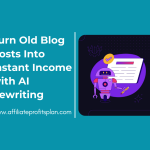Welcome to my article “Digital Marketing Automation: How to Save Time and Increase Efficiency” In the fast-paced world of digital marketing, time is money. Whether you’re a small business owner or managing an entire marketing department, the constant juggling act of emails, social media posts, lead generation, and customer engagement can feel like a never-ending circus. Enter digital marketing automation, the superhero of modern marketing strategies. Imagine having a marketing assistant who works around the clock, never asks for a coffee break, and can handle every repetitive task without breaking a sweat. Sounds like a dream, right? Well, it’s more of a reality than you think!
Digital marketing automation allows you to streamline your efforts, reduce manual work, and improve overall efficiency. From scheduling social media posts to sending personalized emails at the right moment, automation tools can take your marketing game to the next level. Not only does this free up valuable time for your team to focus on creative and strategic tasks, but it also ensures your audience receives timely, relevant content, boosting engagement and conversion rates. In this article, we’ll dive into how digital marketing automation can help you save time, increase efficiency, and transform your marketing strategy. Trust us, your future self will thank you for it!
Access Our Proven Tested Formula for $50-$100 Daily Income – Watch This FREE Video >>

What is Digital Marketing Automation?
Digital marketing automation is basically your digital marketing team’s best friend, working tirelessly behind the scenes to handle repetitive tasks. It’s a set of tools and technologies that help you automate marketing processes like emails, social media posts, lead nurturing, and customer segmentation. Think of it as the wizard of Oz, pulling all the levers and making sure everything happens exactly when it’s supposed to, while you sit back and sip your coffee (or your favorite energy drink—no judgment here).
So, instead of manually scheduling every single social media post or sending follow-up emails to your entire contact list individually, digital marketing automation lets you set it and forget it. You can create workflows that trigger actions based on specific customer behaviors or events, like sending a welcome email when someone signs up for your newsletter, or sending a promotional offer when a lead clicks on your latest product. The best part? These tools can track customer behavior, segment your audience, and even personalize messages for each recipient. It’s like having a marketing assistant who knows exactly what to say and when to say it, without any extra input from you.
In a nutshell, digital marketing automation is about working smarter, not harder. It helps you scale your marketing efforts, nurture leads efficiently, and provide a more personalized experience for your customers—all while saving time and minimizing the risk of human error. Sounds pretty magical, doesn’t it? And the best part is, it’s available for businesses of all sizes. Whether you’re a small business owner or part of a massive enterprise, automation can help you take your marketing strategy to the next level.
Benefits of Marketing Automation: Why It’s a Game-Changer
Alright, let’s talk about why marketing automation is basically a game-changer in the digital marketing world. Picture this: you’re juggling a million things at once—creating content, running ads, tracking customer behaviors, and then, oh wait, you still need to go through your email list and manually send personalized messages to every potential lead. Sounds like a recipe for burnout, right? Well, this is where marketing automation swoops in to save the day, like a superhero with a CRM and a scheduling tool for a cape. Let’s dive into why it’s such a big deal.
First off, time-saving is the obvious win. With automation, you can schedule emails, social media posts, and even follow-up messages in advance. That means no more staring at your screen at 11 PM, trying to figure out when to post that blog you wrote a week ago. You’ve already set it up, and the system does the rest. This frees up precious time for you to focus on the creative aspects of marketing or, you know, just take a break and not be glued to your desk 24/7.
But wait—there’s more! Marketing automation also helps you deliver more personalized experiences at scale. By tracking customer behavior (like which emails they open, which pages they visit, and which products they’re eyeing), automation can send tailored content to the right people at the right time. So, if someone visits your site looking for running shoes but doesn’t buy them, automation can follow up with an email offering a discount on that exact pair, making them feel like the universe is speaking directly to their sneaker-loving soul. It’s like being a mind reader—minus the creepy part.
And then there’s improved lead nurturing. You know those leads that just aren’t ready to make a purchase yet? With automation, you can put them into a workflow where they receive valuable content over time, keeping your brand top-of-mind. Over time, these nurturing workflows will increase the likelihood of turning those cold leads into loyal customers, all while you sit back and relax.
Finally, data-driven decisions become a whole lot easier with marketing automation. These tools help you analyze customer data in real-time, meaning you get insights that allow you to optimize your campaigns instantly. Forget about waiting for a weekly report; now you can make decisions on the fly and adjust your strategy if something’s not working.
In a nutshell, marketing automation takes the mundane, repetitive tasks off your plate and gives you more room to innovate and connect with your audience in a personalized way. It’s not just about saving time—it’s about optimizing your entire marketing strategy for efficiency and growth. And who wouldn’t want that?
Best Digital Marketing Automation Tools to Use
Alright, so now that we’ve established that digital marketing automation is a game-changer, the next question is: which tools should you use to make your life easier? Well, lucky for you, there are a ton of marketing automation tools out there, and I’ve rounded up some of the best that’ll help you save time, boost efficiency, and maybe even make your competitors a little jealous. Let’s dive in!
1. HubSpot Marketing Hub
If you’ve ever heard of marketing automation, you’ve probably heard of HubSpot. And for good reason—this tool is like the Swiss Army knife of digital marketing. It’s a full-suite platform that offers everything from email marketing to landing pages to social media management, all in one place. If you’re looking to do it all—nurture leads, automate your workflows, and track your ROI—HubSpot’s got your back. Plus, it’s easy to use, even if you’re not a tech whiz. The free version offers a lot of power, but if you’re ready to scale, their paid plans are packed with even more features, like advanced analytics and A/B testing.
2. Mailchimp
If email marketing is your thing (and let’s be honest, it should be), then Mailchimp should be at the top of your list. It’s an industry standard and a go-to for many small businesses looking to automate their email campaigns. Mailchimp makes it easy to create automated email sequences for every stage of the customer journey—from welcome emails to re-engagement campaigns. The tool also offers easy-to-read analytics to help you understand which emails are hitting the mark and which ones need a little tweaking. Bonus: It’s got a free plan to help you get started without breaking the bank.
3. ActiveCampaign
ActiveCampaign is like the cool, versatile cousin of HubSpot, with a focus on creating personalized experiences for your leads. It allows you to automate emails, segment your audience, and even create custom workflows based on user behavior. What makes it stand out is its advanced automation builder, which lets you create highly customized and complex workflows. It’s a great option if you’re looking to deliver highly targeted content and personalize the customer experience at scale. If segmentation and data-driven automation are your jam, ActiveCampaign is definitely worth checking out.
4. Marketo
For the big players in the game, Marketo is one of the most powerful marketing automation tools available. Owned by Adobe, Marketo is known for its robust features that cater to large enterprises, but it’s also scalable for smaller businesses as well. With Marketo, you can automate your emails, lead nurturing, social media campaigns, and even webinars. It also integrates seamlessly with other Adobe products, which is great if you’re already in their ecosystem. Marketo shines in its ability to handle complex workflows and large volumes of data. It’s perfect for businesses with big ambitions—and an appetite for data.
Access Our Proven Tested Formula for $50-$100 Daily Income – Watch This FREE Video >>
5. Buffer
Buffer is a social media scheduler with automation features that’ll make managing your social channels a breeze. While it doesn’t offer the same level of comprehensive marketing automation as some of the other tools on this list, it’s perfect for businesses looking to streamline their social media efforts. You can schedule posts in advance, track engagement, and even monitor your competitors—all in one platform. Buffer is fantastic for businesses that want to save time on social media posting without having to sacrifice quality or consistency.
6. Zapier
Zapier is like the ultimate middleman between all your favorite apps and tools. It allows you to create automated workflows between different platforms without needing to code. So, if you’re using tools like Google Sheets, Slack, or Shopify alongside your marketing automation platforms, Zapier can help integrate them seamlessly. For example, you can set up a Zap that automatically adds new leads from your landing page to your CRM, or notify your team on Slack whenever a new customer signs up. It’s perfect for businesses that need to create custom automation across a wide variety of tools.
7. Drip
Drip is a strong contender if you’re in e-commerce or B2C marketing. This tool is designed to help you deliver personalized content to your leads and customers. It offers advanced email automation, segmentation, and behavior tracking, which means you can tailor your communications based on what your audience does (not just what they say). Drip also integrates with various e-commerce platforms like Shopify and BigCommerce, making it an excellent choice if you want to automate everything from abandoned cart emails to post-purchase follow-ups.
8. GetResponse
GetResponse is another all-in-one marketing platform, similar to HubSpot but with a special focus on email marketing and landing page creation. It’s easy to use and comes with a variety of pre-built email automation templates to get you started quickly. One of the standout features is its webinar integration, which is perfect if you’re looking to take your marketing efforts to the next level and engage with your audience in real-time. GetResponse is a great choice for businesses looking to create a seamless customer journey—from lead capture to conversion—all in one place.
How to Implement Marketing Automation Successfully
Alright, so you’re ready to dive into the world of marketing automation. You’ve heard about the amazing benefits—like saving time, improving efficiency, and delivering more personalized customer experiences—but how do you actually implement it successfully? Well, let me tell you: It’s not as intimidating as it sounds. With the right strategy and approach, marketing automation can work wonders for your business. So let’s break it down into manageable steps so you can hit the ground running without tripping over your own excitement.
1. Set Clear Goals and Objectives
Before you even think about diving into a tool or setting up automated workflows, you need to define what success looks like. What are you trying to achieve with marketing automation? Are you trying to increase lead generation? Boost customer retention? Improve conversion rates? The key here is to set measurable, specific goals that align with your overall business objectives. Having a clear vision of what you want to accomplish will not only help you choose the right tools, but it’ll also make it easier to track your progress.
You wouldn’t build a house without a blueprint, right? Well, your automation strategy needs a plan too! So, write it down, make it SMART (specific, measurable, achievable, relevant, time-bound), and get ready to measure your success.
2. Choose the Right Marketing Automation Tool
Choosing the right tool can feel like choosing a favorite child—there are so many great options out there, but you need to pick the one that suits your needs best. As we’ve already discussed, there are tons of marketing automation platforms to choose from—HubSpot, Mailchimp, ActiveCampaign, and more. But before you start a free trial of every tool under the sun, take a minute to consider your business needs.
Do you need a comprehensive platform that handles everything from email marketing to social media automation? Or are you more focused on one specific area, like email or CRM? Consider your current marketing processes and which tools will integrate seamlessly with your existing systems. It’s all about finding the right fit for your business—because the last thing you need is a tool that’s more complicated than a game of chess.
3. Segment Your Audience for Personalization
Okay, now that you’ve got your goals and your tool in place, it’s time to get into the fun part—personalization. The beauty of marketing automation lies in its ability to deliver highly targeted content based on customer behavior and preferences. But here’s the thing: You can’t personalize if you don’t segment your audience first. This means you need to divide your contacts into different groups based on certain criteria—whether it’s demographics, behavior, or purchase history.
The goal is to send the right message to the right person at the right time. So, for example, you might want to send one type of email to new subscribers, another to leads who’ve shown interest in your products, and a different one to loyal customers who are ready to be upsold. Segmentation will help you craft more relevant, engaging content that speaks to your audience on a deeper level. Remember: A happy customer is an engaged one, and an engaged customer is a loyal one.
4. Create Engaging and Relevant Content
Here’s the thing: Even though marketing automation is all about efficiency, that doesn’t mean you should skimp on the quality of your content. Just because your emails or social posts are automated doesn’t mean they should feel robotic. Your audience still wants to hear from you in a way that’s valuable, relevant, and engaging. So, take the time to create high-quality content that resonates with your audience at every stage of the buyer’s journey.
For example, you might create an engaging welcome email series for new subscribers, followed by educational content for leads in the consideration phase, and then send a special offer or discount for those who are ready to purchase. The key is to make sure each piece of content serves a purpose and guides the user down the funnel toward the ultimate goal: conversion.
5. Test, Measure, and Optimize
Marketing automation isn’t a “set it and forget it” strategy. If you want to see real results, you need to continuously test, measure, and optimize your campaigns. Whether it’s A/B testing subject lines for your emails or tweaking your landing pages to improve conversion rates, there’s always room for improvement.
Make sure you’re tracking key metrics—such as open rates, click-through rates, and conversion rates—so you can identify which parts of your automation are working and which need a little tweaking. Over time, you’ll learn what resonates with your audience and can refine your automation strategy to maximize ROI.
It’s also important to take a close look at your customer journey and identify any bottlenecks or friction points that might be slowing down conversions. Perhaps your lead nurturing emails are on point, but your post-purchase follow-up sequence needs some work. Regularly revisiting and optimizing your campaigns ensures that you’re always improving and staying relevant.
6. Scale and Expand as You Grow
Once you’ve mastered the basics of marketing automation, it’s time to scale. As your business grows, so should your automation strategy. The beauty of marketing automation is that it can grow with you. Once your initial campaigns are running smoothly, you can start to implement more advanced automation, such as multi-step workflows, lead scoring, and advanced segmentation.
The goal is to create a seamless, efficient system that works even when you’re not around. As you expand your automation strategy, make sure you’re continuously optimizing and tweaking it for better results. And remember, automation isn’t about replacing your team—it’s about empowering them to focus on the high-value tasks while your automation takes care of the repetitive stuff.
Conclusion: The Future is Automated, and It’s Looking Bright
Alright, you made it to the end! And if you’re feeling a bit more confident about diving into the world of marketing automation, I’d say that’s a win. But before we wrap things up, let’s take a step back and look at the bigger picture. Digital marketing is always evolving, and automation is no longer a luxury; it’s becoming a necessity for businesses looking to stay competitive.
Access Our Proven Tested Formula for $50-$100 Daily Income – Watch This FREE Video >>
Think of marketing automation as your trusty sidekick. It won’t replace the creativity and human touch that’s essential to crafting compelling content and engaging with your audience. But it will take over those repetitive, time-consuming tasks that tend to eat up all your time—leaving you free to focus on what really matters: strategy, creativity, and scaling your business. It’s like getting a robot assistant who handles the mundane stuff while you’re busy plotting your next big idea.
And let’s be honest: Who doesn’t love a little extra time on their hands? With marketing automation, you’re not only increasing efficiency; you’re also ensuring a more personalized experience for your audience, which is ultimately what keeps them coming back for more. It’s a win-win situation!
So, here’s the takeaway: Don’t think of automation as something that’s going to “do everything for you.” It’s a tool to help you work smarter, not harder. As your business grows, so should your marketing efforts, and automation is the best way to scale without burning out your team. By automating repetitive tasks, delivering personalized content, and optimizing your processes, you’re setting yourself up for long-term success.
Now, go ahead and put these steps into action. Start small, experiment with different tools, and don’t be afraid to fail a little along the way. Because if there’s one thing we know, it’s that marketing automation is here to stay, and the businesses that embrace it will be the ones leading the charge into the future.
Thanks a lot for reading my article on “Digital Marketing Automation: How to Save Time and Increase Efficiency” till the end. Hope you’ve helped. See you with another article.










